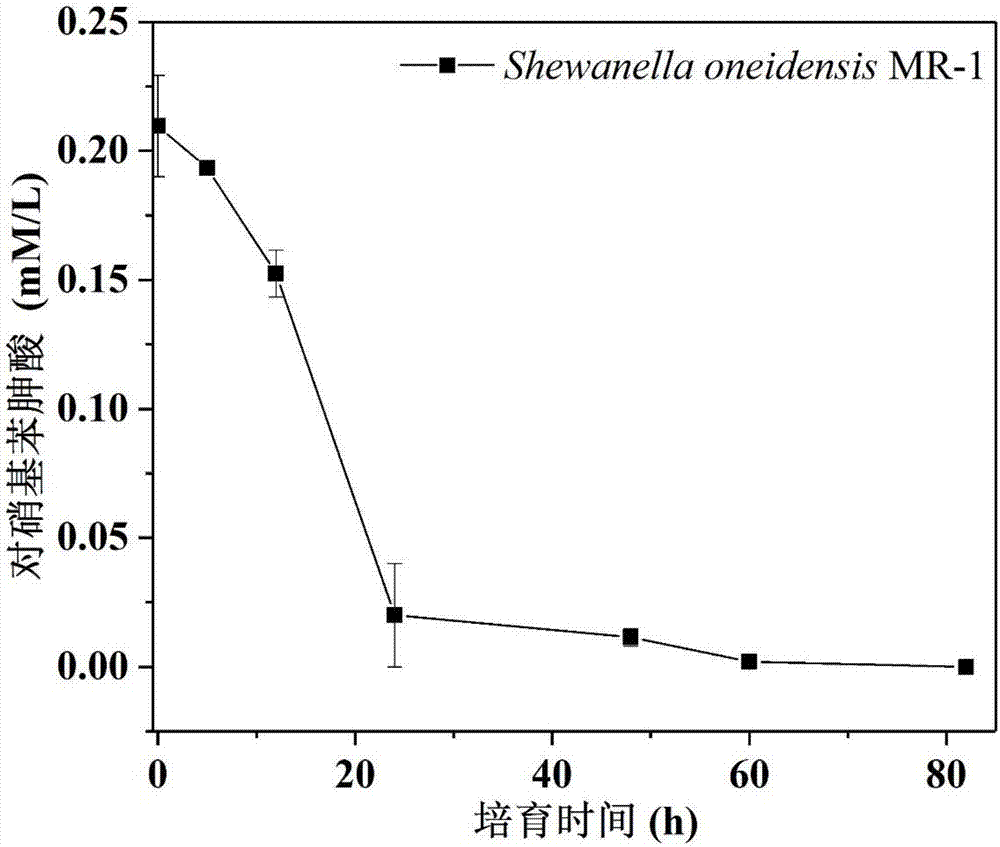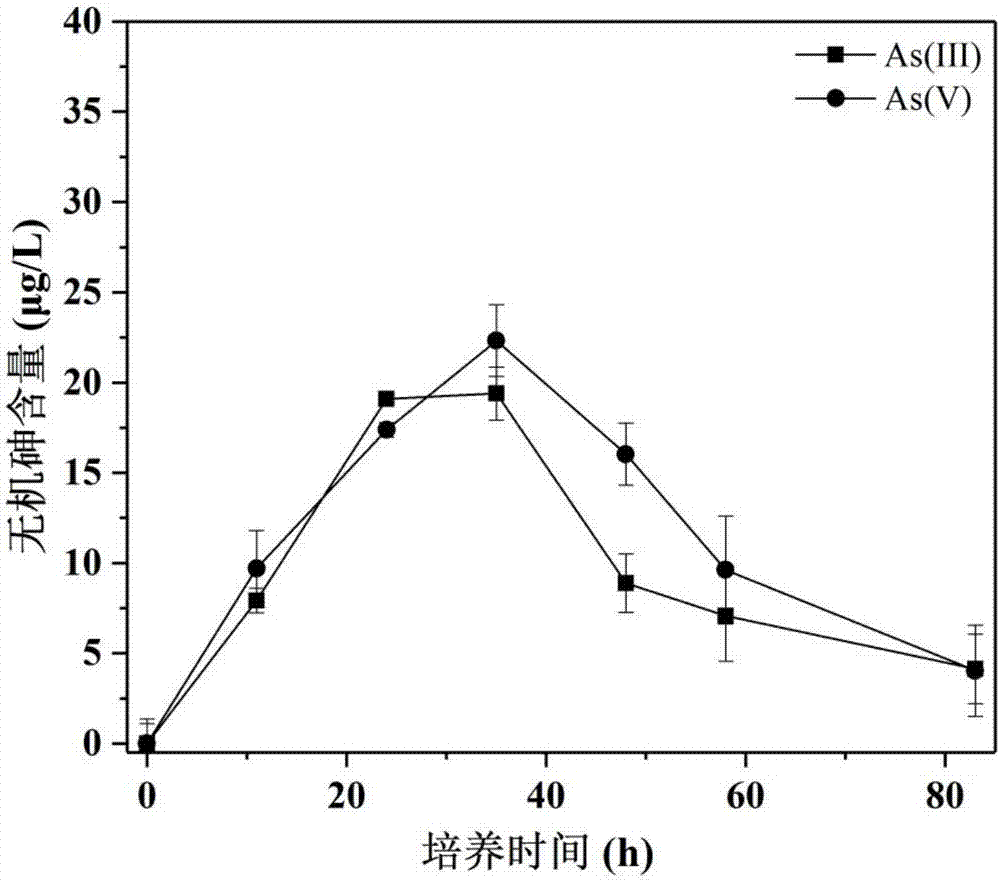Application of bacterial strain
A technology of reaction and Shewanella, applied in the field of environmental engineering, can solve problems such as environmental pollution
- Summary
- Abstract
- Description
- Claims
- Application Information
AI Technical Summary
Problems solved by technology
Method used
Image
Examples
Embodiment 1
[0047] Example 1, Shewanella oneidensis MR-1 degrades p-nitrophenylarsine under anaerobic conditions
[0048] The formulation of the LB medium used in this example is as follows: 10g / L peptone, 10g / L NaCl, 5 g / L yeast extract, autoclaved at 121°C for 20min and then used for the expanded culture of strains.
[0049] The main components of the medium used for anaerobic culture are as follows: 11.91g / L HEPES buffer salt, NaCl 0.46g, K 2 HPO 4 0.05g / L, KH 2 PO 4 0.035g / L, (NH 4 ) 2 SO 4 0.225g / L, MgSO 4 ·H 2 O 0.117g / L and trace element mixture (pH=7.2). Add sodium lactate as the only electron donor in the anaerobic medium to maintain bacterial growth (final concentration 5mM / L) in this example.
[0050] The anaerobic reaction system used in this example is a serum bottle containing 30 mL of mineral salt medium. After 15 minutes of nitrogen exposure, the serum bottle is sealed with a butyl rubber stopper and an aluminum cap to ensure a stable anaerobic reaction system....
Embodiment 2
[0056] Example 2, Degradation products of Shewanella oneidensis MR-1 p-nitrophenylarsine and degradation mechanism analysis under anaerobic conditions
[0057] In this example, the qualitative analysis of the degradation products is mainly carried out by various analytical means.
[0058] 1. High performance liquid chromatography detection of the product
[0059] The sample described in the previous example is used for the detection of high performance liquid chromatography and hydride generation-atomic fluorescence detector after being filtered through a 0.22 μm filter membrane. High-performance liquid chromatography (HPLC, Essentia LC-16, SHIMADZA, Japan) analysis conditions are: chromatographic column (ZORBAX Eclipse Plus C18: 4.6 × 250 nm, 5 μm, Agilent, USA), mobile phase is 10mM / L Potassium Dihydrogen Phosphate Solution (pH7.2), the measurement flow rate is 1.0mL / min, the test injection volume is 20μL, the test wavelength of p-nitrophenylarsonic acid and arsanic acid a...
Embodiment 3
[0075] Example 3, Toxicity detection of Shewanella oneidensis MR-1 p-nitrophenylarsine acid degradation products
[0076] In this example, an autoluminescent bacterium, Salmonella typhimurium Sal94, was used to detect the toxicity of the degradation product of p-nitrophenylarsine from Shewanellaoneidensis MR-1.
[0077] Salmonella typhimurium Sal94 is a model strain widely used in the detection of genotoxicity in water samples. The more toxic the substance contained in the water body, the lower the intensity of its autoluminescence, which is a sensitive method for evaluating product toxicity.
[0078] The activation of the Salmonella typhimurium Sal94 bacterial strain in this example is as follows: when the bacterial strain is activated in LB medium, it is necessary to add 30 μg / ml of kanamycin to ensure the stability of the plasmid, overnight in a constant temperature shaker (30 ° C, 200 rpm) After culturing, inoculate into fresh LB medium with an inoculum size of 1:100 and c...
PUM
 Login to View More
Login to View More Abstract
Description
Claims
Application Information
 Login to View More
Login to View More - R&D
- Intellectual Property
- Life Sciences
- Materials
- Tech Scout
- Unparalleled Data Quality
- Higher Quality Content
- 60% Fewer Hallucinations
Browse by: Latest US Patents, China's latest patents, Technical Efficacy Thesaurus, Application Domain, Technology Topic, Popular Technical Reports.
© 2025 PatSnap. All rights reserved.Legal|Privacy policy|Modern Slavery Act Transparency Statement|Sitemap|About US| Contact US: help@patsnap.com



